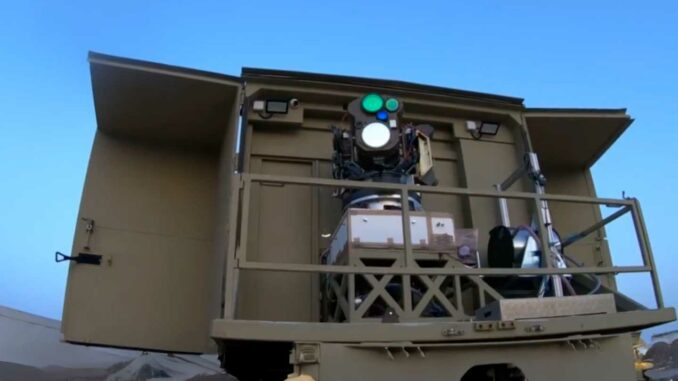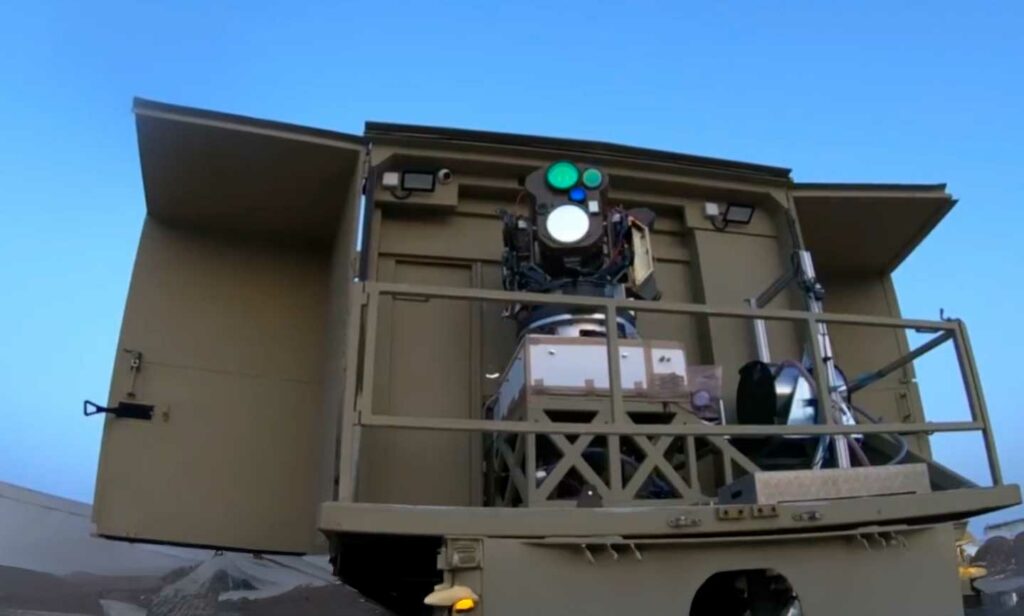
Israel’s Iron Beam system uses a laser to intercept low-cost drones and rockets.
The Iron Beam system, developed by Rafael Advanced Defense Systems, is an air defense system that uses a high-energy laser to intercept aerial threats such as drones, rockets, and mortar shells. It is part of Israel’s multi-layered defense strategy, alongside systems such as Iron Dome, David’s Sling, and Arrow.
Technical characteristics of the system
- Laser power: The system uses a fiber optic laser with an estimated power of between 100 and 150 kW.
- Effective range: The operational range is approximately 7 kilometers, suitable for short-range threats.
- Neutralization time: The system can neutralize a target in approximately 4 seconds after acquisition.
- Mobility: The system is trailer-mounted, allowing for some mobility in the field.
Operational advantages
- Cost per interception: Each shot costs approximately $2 to $3, compared to approximately $50,000 for a Tamir missile from the Iron Dome system.
- Unlimited firing capacity: Unlike ammunition-based systems, the laser can fire almost indefinitely, subject to power supply.
- Reduced collateral damage: The absence of debris after interception limits the risk to protected areas.
Identified limitations
- Weather conditions: The laser’s effectiveness is reduced in fog, rain or dust, which affect the propagation of the beam.
- Direct line of sight: The system requires direct visibility of the target, limiting its use in dense urban or mountainous environments.
- Multiple targets: The ability to engage multiple targets simultaneously is limited, requiring coordination with other defense systems.

Operational deployments
In October 2024, a scaled-down version of the Iron Beam system was used for the first time in a real-world situation, intercepting Hezbollah drones. A total of 35 drones were successfully neutralized. This lower-powered version was deployed in response to increased drone attacks on the northern front.
Integration into multi-layered defense
The Iron Beam system is designed to complement existing systems:
- Iron Dome: Short-range rocket interception.
- David’s Sling: Medium-range missile interception.
- Arrow: Long-range ballistic missile interception.
Iron Beam is primarily used against low-scale threats, offering a cost-effective solution for saturation attacks.
Development prospects
Variants of the system are currently under development:
- Iron Beam-M: Mobile version adapted for light vehicles, with 50 kW of power and the ability to neutralize up to 10 targets simultaneously.
- Lite Beam: Lightweight version for close protection of mobile units, with a range of 2 kilometers.
In addition, tests are underway for integration on naval and air platforms.
Strategic implications
The development of the Iron Beam system reflects an adaptation to asymmetric threats, particularly the growing use of drones by non-state groups. Its planned entry into service at the end of 2025 represents a step forward in the diversification of defense capabilities, combining operational effectiveness and cost control.
The Iron Beam system is a technological response to the challenges posed by low-flying aerial threats. Its integration into Israel’s multi-layered defense system illustrates a pragmatic approach aimed at optimizing resources in the face of saturation attacks.
War Wings Daily is an independant magazine.